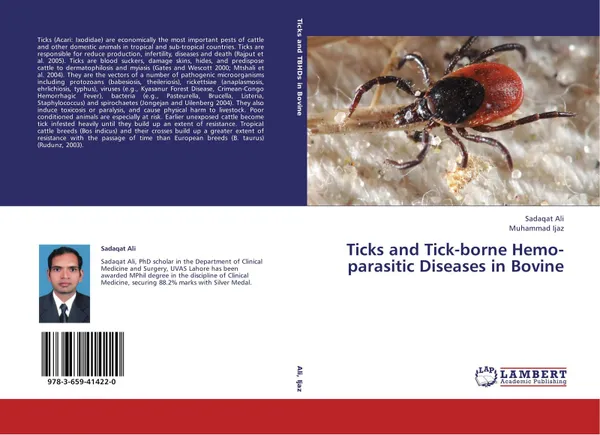Ticks and Tick-borne Hemo-parasitic Diseases in Bovine
📒 Ticks (Acari: Ixodidae) are economically the most important pests of cattle and other domestic animals in tropical and sub-tropical countries. Ticks are responsible for reduce production, infertility, diseases and death (Rajput et al. 2005). Ticks are blood suckers, damage skins, hides, and predispose cattle to dermatophilosis and myiasis (Gates and Wescott 2000; Mtshali et al. 2004). They are the vectors of a number of pathogenic microorganisms including protozoans (babesiosis, theileriosis), rickettsiae (anaplasmosis, ehrlichiosis, typhus), viruses (e.g., Kyasanur Forest Disease, Crimean-Congo Hemorrhagic Fever), bacteria (e.g., Pasteurella, Brucella, Listeria, Staphylococcus) and spirochaetes (Jongejan and Uilenberg 2004). They also induce toxicosis or paralysis, and cause physical harm to livestock. Poor conditioned animals are especially at risk. Earlier unexposed cattle become tick infested heavily until they build up an extent of resistance. Tropical cattle breeds (Bos indicus) and their crosses build up a greater extent of resistance with the passage of time than European breeds (B. taurus) (Rudunz, 2003).
Мнения
